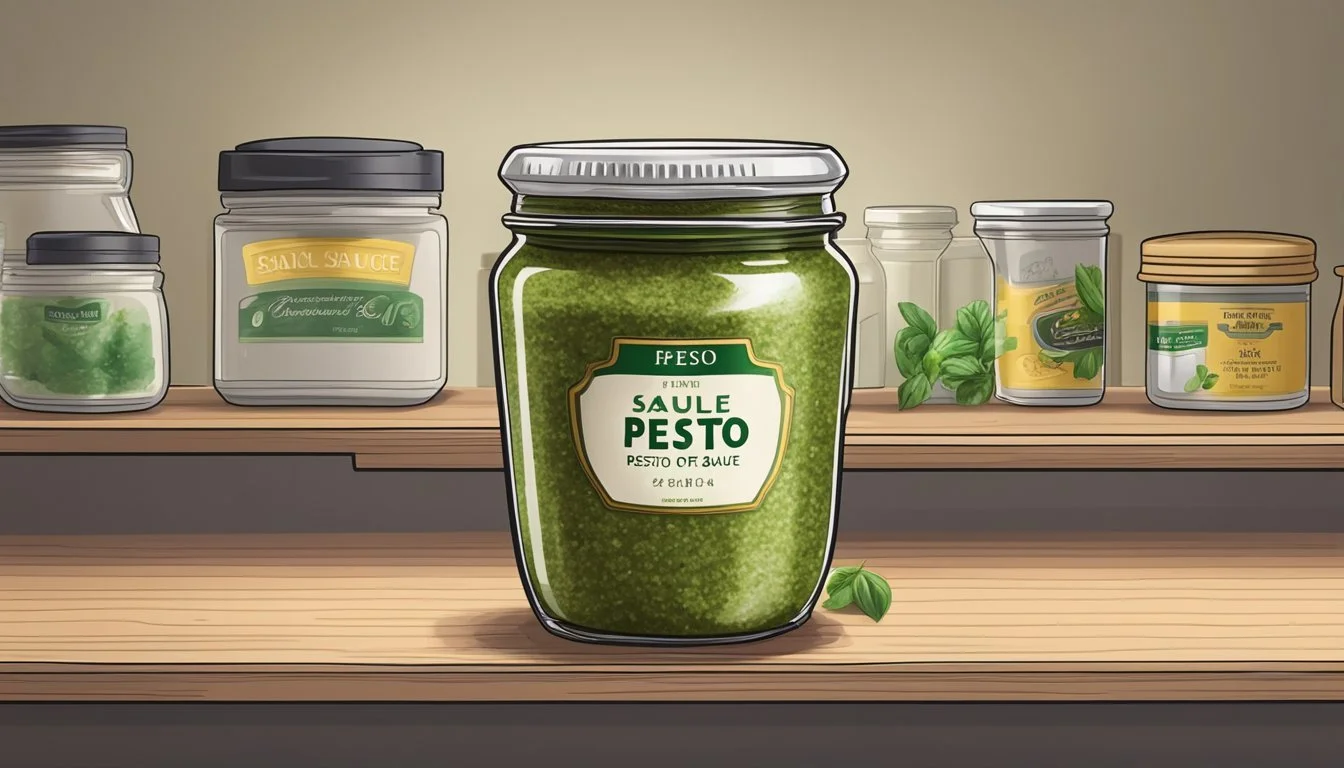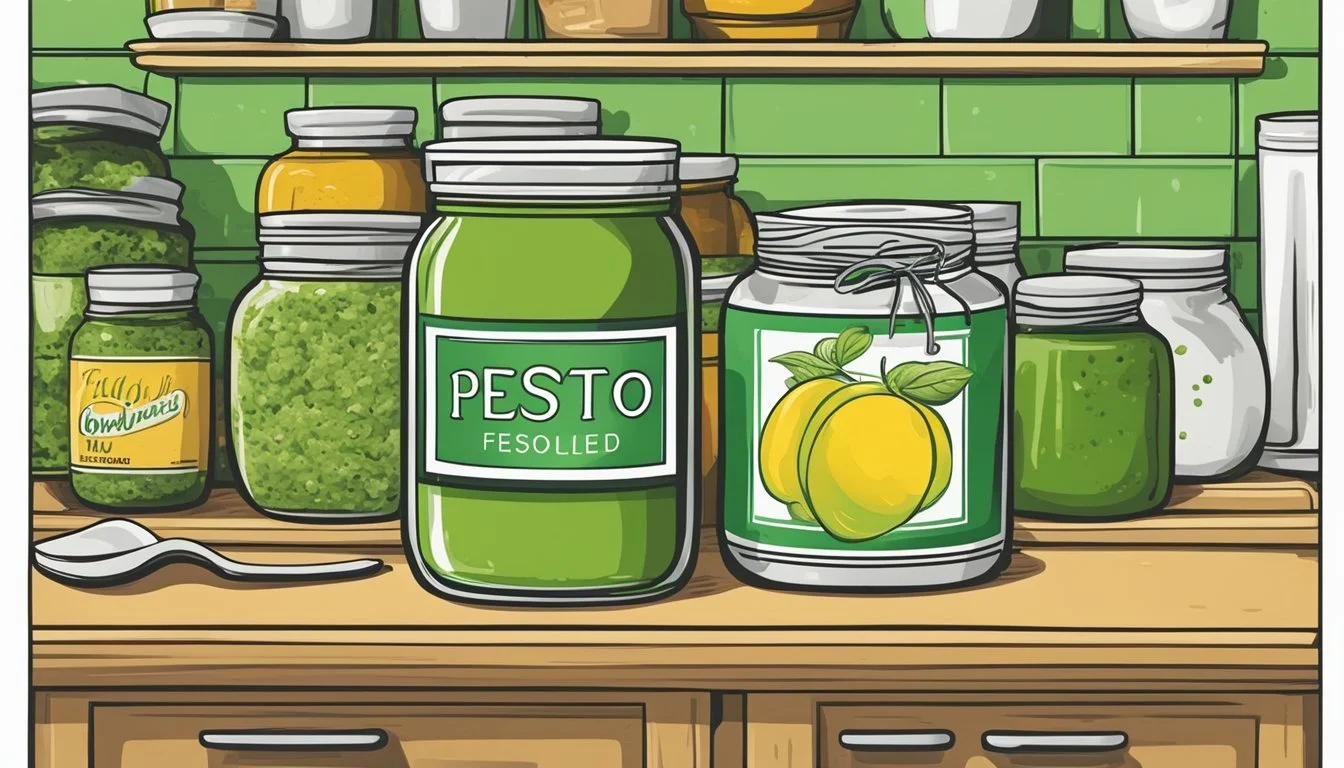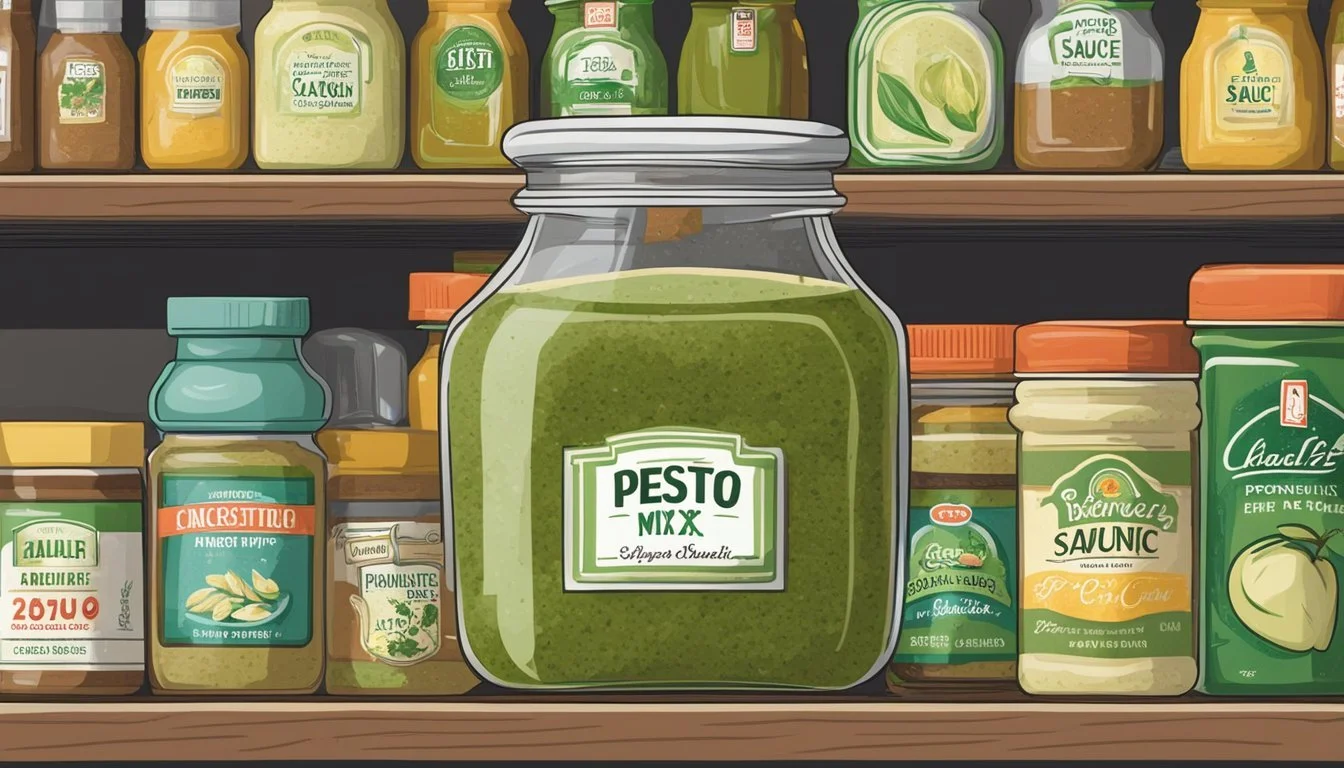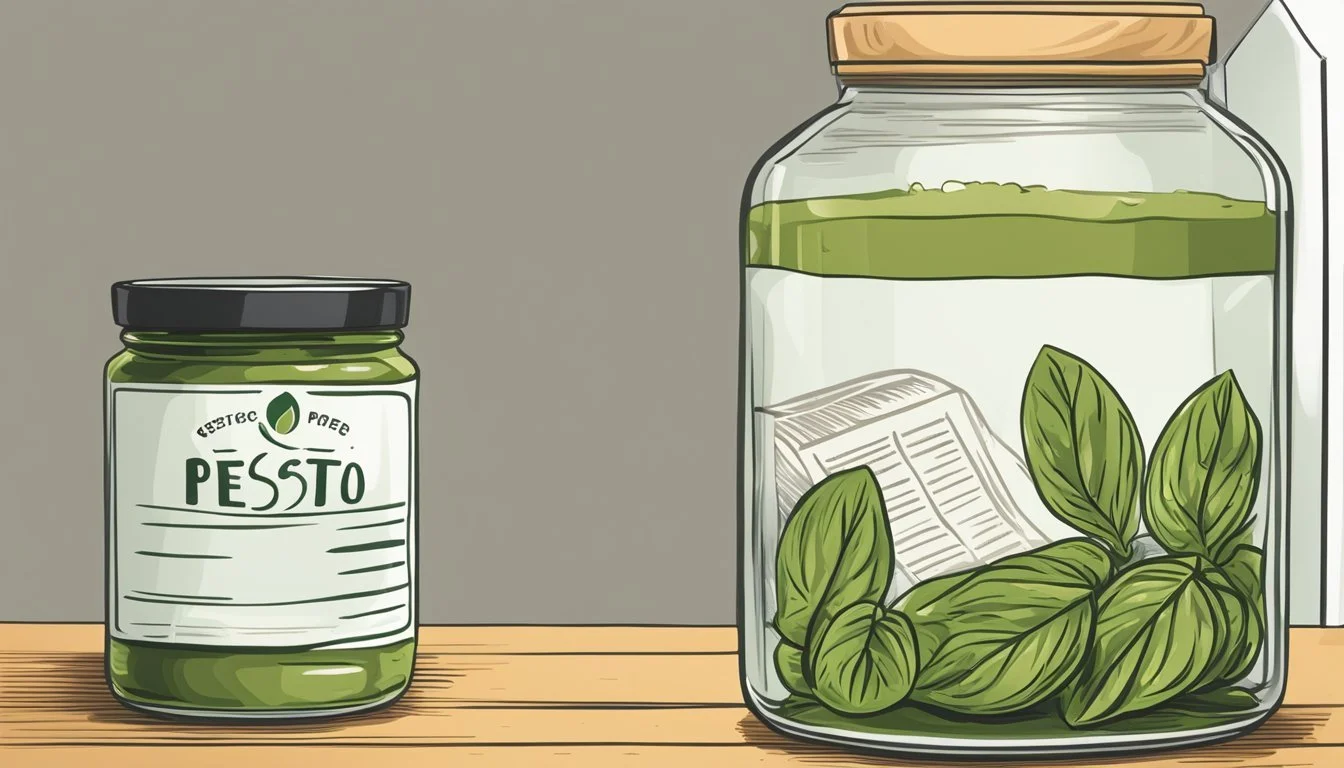How Long Does Pesto Sauce Mix Last?
Shelf Life and Storage Tips
Pesto, the fragrant Italian sauce made from basil (how long does basil last?), olive oil, pine nuts, Parmesan cheese, and garlic, is a versatile and beloved condiment. Its longevity varies significantly depending on various factors, including its form—be it homemade or store-bought—and its storage conditions. Homemade pesto, prepared with fresh ingredients and without preservatives, generally has a shorter shelf life than its commercial counterparts. It can last up to 5-7 days when stored properly in the refrigerator. For those who make pesto in larger quantities, freezing extends its usability, preserving the sauce's flavors for use beyond the typical refrigeration period.
Store-bought pesto sauce comes in two main types: refrigerated and shelf-stable. Pesto found in the refrigerator section of the store is meant to be kept cold and should be consumed within 1-2 weeks of opening. On the other hand, shelf-stable pesto, which is sold unrefrigerated, can have a much more extended shelf life—lasting months unopened due to the sterilization and packaging process it undergoes. Once opened, however, it should be used relatively quickly, within 3 days to 2 weeks, depending on the brand and specific preservatives used.
Regardless of the type, to maintain its freshness and prevent spoilage, pesto should always be stored in an airtight container when placed in the refrigerator. Exposure to air can degrade the quality of the sauce and hasten the growth of mold or bacteria. Therefore, proper storage is paramount to preserving pesto's vibrant color, aromatic flavor, and safe consumption.
Understanding Pesto
Before diving into the specific types and ingredients, one must recognize that pesto is a versatile Italian sauce, traditionally made from fresh basil and used to add a rich, herbal flavor to various dishes.
Types of Pesto
Pesto comes primarily in two varieties that reflect geographical origins and ingredients used:
Genovese Pesto: Hailing from Genoa in the Liguria region of Italy, this is the most traditional form of pesto. It's bright green, often due to the use of fresh basil leaves.
Sicilian Pesto (Pesto Rosso): A Sicilian variant that includes tomatoes and almonds, giving it a more red coloration.
Main Ingredients
The standard recipe for classic Genovese pesto involves a few key ingredients, each contributing to the flavor profile and texture of the sauce:
Basil: The foundation of the sauce, which provides its fresh, herby backbone.
Olive Oil: Typically extra virgin olive oil is used for its fruitiness and binding properties.
Pine Nuts: These are blended into the mix to give pesto its creamy consistency and a nutty flavor.
Garlic: Added for a sharp, pungent depth of flavor.
Parmesan Cheese: Grated into the sauce to lend a salty, umami quality and to thicken the sauce slightly.
To maintain the bright color and fresh taste, pesto should be stored away from direct sunlight and, once opened or prepared, kept in the refrigerator to extend its shelf life.
Shelf Life of Pesto
Pesto's shelf life varies significantly depending on whether it's store-bought or homemade, and if it's been opened or remains sealed.
Unopened Pesto Shelf Life
Store-bought, unopened pesto typically lasts past its printed best by date when stored in a pantry:
Jarred shelf-stable pesto: Up to 3 months past the best by date if kept in a cool, dry place.
Refrigerated fresh pesto: A few days beyond the use-by date if kept refrigerated.
Opened Pesto Shelf Life
Once opened, pesto's shelf life is reduced, and it must be stored in the refrigerator:
Jarred shelf-stable pesto: 1 to 2 weeks if refrigerated properly after opening.
Refrigerated fresh pesto: 4 to 7 days after opening the jar or container and placing it in the refrigerator.
Storing Pesto
Pesto's shelf life depends on the storage method applied, with refrigeration and freezing being the most effective for preserving its freshness and flavor.
Refrigerator Storage
To maximize the lifespan of pesto in the refrigerator, it should be stored in an airtight container or sealable jar. Once opened, store-bought pesto can remain fresh in the fridge for up to 2 weeks. Homemade versions may last for about 5 to 7 days, provided that no contaminants are introduced during use.
Freezer Storage
For extended storage, pesto can be kept in the freezer. When using ice cube trays for freezing, pesto can be conveniently portioned and will last for up to 6 months. It’s important to transfer the pesto cubes to a plastic container or sealable freezer bags after they're frozen to maintain quality.
Pantry Storage
Unopened jars of commercially produced pesto can be held in a cool and dry area, such as a pantry. The jars remain stable up to 3 months past the 'best by' date on the label. The key to maximizing pesto's shelf life in the pantry is ensuring the area is indeed cool and dry to prevent spoilage.
Homemade Pesto Storage
When preserving homemade pesto, the quality of ingredients and immediate storage after preparation are crucial to maintaining its freshness and flavor.
Freshness and Quality
Homemade pesto is ideally made with fresh ingredients, including fresh basil, high-grade olive oil, fresh garlic, roasted pine nuts or walnuts, and freshly grated Parmesan cheese. Using a food processor or blender, they can create a vibrant and flavorful pesto sauce. However, the freshness of homemade pesto is fleeting.
Refrigeration: Homemade pesto should be stored in the refrigerator if one plans to use it within a few days. The cool environment helps to slow down the oxidation process that can dull the flavors. When refrigerated properly in an air-tight container, homemade pesto can maintain its quality for up to 2 weeks.
Freezing Techniques: For long-term storage, freezing is the recommended method. One can either freeze the pesto in standard containers or use ice cube trays for portion-controlled cubes. Once frozen, transfer the cubes to a freezer bag or an airtight container. This method can keep pesto fresh for up to 6 months. When thawing, it's best to do so gradually in the refrigerator.
To ensure the highest quality, pesto should be topped with a thin layer of olive oil before sealing the container, which can help to prevent browning. It's important to note that homemade pesto doesn't contain the preservatives found in store-bought versions and thus requires more careful handling to prevent spoilage.
Signs of Spoilage
When it comes to pesto, recognizing the signs of spoilage is important to ensure safety and quality. The sauce's freshness can deteriorate due to factors such as exposure to air and bacteria.
Visual and Texture Changes
Pesto naturally has a bright green hue and a smooth, slightly coarse texture. One should be cautious if there is:
Discoloration: An obvious sign is a shift from green to brown or black, indicative of oxidation or mold growth.
Mold: White, blue, or green fuzz on the surface is a clear indicator of mold, and the sauce should be discarded immediately.
Alterations in texture, such as watery separation or a slimy coating, also suggest that pesto has gone bad.
Odor and Taste Alterations
Smell and taste are reliable indicators when checking pesto for spoilage:
Odor: Fresh pesto has a distinct herbaceous scent. A rancid or sour smell implies that the pesto has turned.
Taste: While tasting is not recommended if mold or a foul odor is present, a perceptible bitter or off flavor can denote spoilage.
Health Considerations
When it comes to pesto sauce mix, understanding the potential health risks associated with its spoilage is crucial. Consumers need to be vigilant about the signs of spoilage and be aware of the consequences of ingesting spoiled food.
Risks Associated with Spoiled Pesto
Spoiled pesto can pose several health risks. Botulism, a rare but serious illness caused by Clostridium botulinum bacteria, can occur in improperly stored foods, including pesto. Although the oil content in pesto may help inhibit mold growth, it does not prevent the potential growth of botulinum bacteria.
The primary indicators of spoilage in pesto include a noticeable change in color, typically turning brown or black, an off-odor which can be sour or rancid, and a change in taste. These signs should not be ignored as they can lead to food poisoning.
Color Change: Pesto turning from vibrant green to brown signifies loss of freshness and potential spoilage.
Odor: A sour or rancid smell from pesto suggests bacterial growth.
Taste: A taste that is markedly different from the fresh, herbal flavor of pesto indicates spoilage.
Consuming spoiled pesto may result in health risks such as nausea, vomiting, and diarrhea. If one experiences such symptoms after consuming pesto that is suspected to be bad, it is advised to seek medical attention promptly. To avoid these risks, always store pesto according to the manufacturer's instructions and consume it before the best before date, or within the recommended time frame if homemade or after opening.
Extending Pesto's Shelf Life
Effective storage methods and the use of preservatives are pivotal in prolonging the freshness and usability of pesto sauce. By adhering to these strategies, the shelf life of both homemade and store-bought pesto can be maximized.
Effective Storage Methods
Once opened or prepared, pesto should be stored in an airtight container to prevent exposure to air, which can deteriorate its quality. One can take the storage a step further by adding a thin layer of olive oil on top of the pesto before sealing it, which acts as a barrier to reduce oxidation and maintain freshness.
Freezing pesto is a highly effective way to extend its shelf life. It's best done by portioning the sauce into ice cube trays, allowing for easy use in future cooking. Once frozen, transfer the pesto cubes to a sealed bag or container to prevent freezer burn. Defrost only as much as needed to maintain quality and prevent waste.
Use of Preservatives
While homemade pesto typically isn't made with preservatives, store-bought versions often contain them to extend shelf life. However, if one wishes to avoid artificial preservatives, using natural alternatives like squeezing in lemon juice or extra olive oil can help. Lemon juice contributes acidic properties that can help prevent spoilage, while olive oil provides a protective layer against air.
It's important to note that despite these methods, one should always check leftover pesto for signs of spoilage before use, and never consume if the product looks or smells off, as food storage safety is paramount.
Thawing and Using Frozen Pesto
Properly thawing frozen pesto is crucial to preserve its flavor and texture. Once defrosted, it seamlessly blends into a variety of dishes from pasta to soups.
Thawing Process
Frozen pesto can be thawed in a few different ways, depending on the time available. For a gradual thaw, transferring the frozen pesto to the refrigerator overnight is recommended. This slow method ensures that the pesto maintains its quality and prevents bacterial growth. For a quicker option, one can thaw frozen pesto at room temperature for approximately 20 minutes. If immediate use is planned, microwaving the pesto on the defrost setting is a viable alternative. It's essential to stop and stir the pesto intermittently to achieve even thawing. Regardless of the method, once the pesto is defrosted, it should be used promptly and not refrozen.
Note:
Refrigerator: Thaw overnight
Room Temperature: Thaw for 20 minutes
Microwave: Use the defrost setting with intervals of stirring
Incorporating into Dishes
When pesto is fully defrosted, it can be incorporated into a multitude of dishes to enhance flavor. Pesto is traditionally stirred into pasta to make a quick and aromatic sauce. Beyond pasta, it works well as a flavor enhancer for pizza toppings, (What wine goes well with pizza toppings?) a rich addition to soups, or as a spread for sandwiches. Additionally, one can use pesto as a marinade to impart its distinctive herby and garlicky notes onto meats or vegetables before cooking. It is important to mix thawed pesto before adding it to any dish to ensure its oils and ingredients are well-combined.
Applications:
Pasta: Stir in as a sauce
Pizza: Use as a topping
Soups: Add for enhanced flavor
Sandwiches: Spread on bread
Marinade: Apply to meats or vegetables
Practical Tips
Proper storage and understanding of labels are crucial for maximizing the shelf life of pesto while ensuring it remains safe to consume.
Best Practices for Pesto Use
When using pesto, hygiene is paramount to prevent contamination. Always use clean utensils when serving pesto to maintain its freshness. For proper storage, if the pesto is store-bought and unrefrigerated, it can remain at room temperature until opened. Once opened, refrigeration is necessary and generally, it should be consumed within two weeks. To extend its lifespan, one can freeze pesto for up to six to eight months. When freezing, consider using ice cube trays for easy portioning.
Understanding Expiration Labels
Pesto packaging usually provides an expiration date, use-by date, or best by date. An expiration date indicates when it's no longer safe to use. A use-by date implies when the product will reach its peak quality, and the best by date suggests when it is still good to consume but may not be at its peak. Once these dates pass, the pesto might still be usable but its freshness and flavor may decline, so it should be assessed carefully before use. If refrigerated appropriately, store-bought pesto can last up to three weeks past these dates, while homemade pesto should be consumed quicker due to the lack of preservatives.
FAQs
This section addresses frequently asked questions about the longevity and preservation of pesto, providing clear insights on its shelf life and storage methods.
Common Questions About Pesto
How long does pesto last? Pesto's shelf life varies depending on whether it is homemade or store-bought, and whether it's been opened or not. Unopened store-bought pesto can typically last 1-2 weeks past the printed date if kept in the refrigerator and up to 6 months in the freezer. Once opened, it should be consumed within 4 to 7 days, depending on the brand and storage conditions.
Can I freeze pesto for extended shelf life? Yes, pesto can be frozen. To freeze, it is recommendable to use freezer bags or an airtight container. For individual portions, one could spoon pesto into an ice cube tray, cover it with plastic wrap, and transfer the frozen cubes into a freezer bag. When stored in the freezer, pesto can last up to 6 months.
What are the signs that pesto has gone bad? When pesto spoils, it may change color, typically turning brown or black. The presence of mold or a rancid, sour smell are also indications that pesto should no longer be consumed.
Is there a difference in shelf life between different types of pesto? Pesto from various regions like Genoa or different brands such as Buitoni may have slightly varying shelf lives. It’s prudent to always refer to the label's storage recommendations for the specific product.
By following proper storage methods, one can ensure that their pesto remains fresh for as long as possible while maintaining its unique flavor profile.
Conclusion
The longevity of pesto sauce is influenced by several factors, each playing a pivotal role in maintaining its freshness and quality.
Storage Conditions: Pesto's shelf life is significantly impacted by how it is stored. Unopened, store-bought pesto can last for 1-2 weeks in the fridge and up to 3 months past the "best by" date when unrefrigerated, whereas homemade versions typically remain fresh for 5-7 days when refrigerated.
Exposure to Air: Proper sealing is crucial as exposure to air can escalate spoilage due to oxidation. Upon opening, pesto should be consumed within a week to maintain its quality.
Organic Growth: Pesto contains fresh ingredients that can be prone to organic growth if not stored correctly, emphasizing the importance of refrigeration.
Light and Equipment: Mason jars or airtight containers are preferred to reduce the light exposure and air contact, both of which can degrade pesto's quality.
Method of Preparation: Homemade pesto, made with fresh ingredients and without preservatives, generally has a shorter lifespan than its commercial counterpart.
In essence, the longevity of pesto sauce hinges on diligent storage practices, minimal air and light exposure, and the method of preparation. Adhering to these guidelines ensures that the vibrant character of pesto sauce is preserved, offering a flavorful addition to a wide array of dishes.











